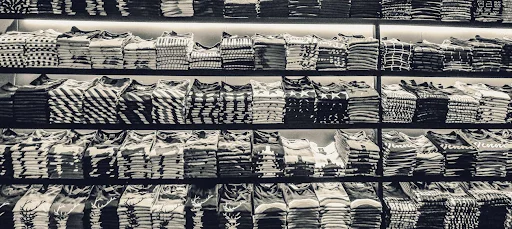Dreaming of lower printing costs?
Every custom apparel business wants to bring in high margins and produce items as cost-efficiently as possible. Printing custom orders one-by-one is chewing through your profits. To be more competitive and earn more, you must consider the scale of your production DTF Transfers.
As a proud custom apparel business, a dtf transfer gang sheet approach must be a consideration.
Continue below to learn how to make the switch!
DTF Transfers Gang Sheet Cheatsheet:
- Why Gang Sheet Production Saves You Money
- How To Maximize Your Print Space
- The Best Gang Sheet Layout Strategies
- Common Mistakes That Cost You Cash
Why Gang Sheet Production Saves You Money
Gang sheet printing is one of the best ways to be more profitable.
Here’s how it works: Designing individual transfers wastes both time and materials. A single setup on a printer or heat press costs money, regardless of how much of it is used.
When a customer orders one custom T-shirt, your business can profit from it. However, once you start considering the cost of printing one-by-one, you realize how inefficient it is.
Unused areas of your transfer film waste money.
DTF transfers gang sheet printing lets you print multiple transfers at once. Instead of only one design, many of them will fit on a single transfer film sheet. The result is that you will use far less materials and space in production.
The market was valued at $2.68 billion in 2025 and is expected to grow exponentially as more businesses recognize the cost savings.
The more time your production saves, the more money you will make. Printing with DTF transfers gang sheets means running your printer and heat press less, meaning more time.
How To Maximize Your Print Space
Cutting down on materials by maximizing your print space is where gang sheets shine.
Simply squeezing more transfers into a given area of print space will result in cost-savings. You can’t just cram them in however, and lay out your designs haphazardly.
Planning your layout before production is critical. It’s good practice to always know exactly what needs to be printed, and in what sizes. Once the file is sent to the printer or heat press, cutting it up later is inefficient.
Try these tricks:
- Group similar-sized designs together when possible. Bunching like-sizes next to each other prevents gaps and wasted space. Smaller-sized designs can fill in the nooks and crannies between larger designs. This Tetris-style of design lets you use every inch of the sheet.
You can use design software like Adobe Illustrator or Photoshop. Canva is also a great tool if you don’t have experience with professional-grade programs. Whichever software you use, rotate, resize, and reposition your designs as needed to cover as much of the sheet as possible.
Leave little spacing between designs to fit more. Small cuts should be made between designs for easy separation. However, the less spacing you have, the more transfers will fit.
Professional print shops often aim for 80% to 90% coverage on their gang sheets. Less than 80% and you’re losing money with every wasted square inch.
The Best Gang Sheet Layout Strategies
Producing a well-planned gang sheet layout takes time.
Planning your sheet first, before you even start your design work, can save you time later. No last-minute adjustments mean wasting less materials and printer/heat press cycles.
Follow these best practices:
- Nest smaller designs between larger ones to fill in gaps
- Rotate designs strategically (90-degree turns work well)
- Group similar-colored designs together
- Leave cutting margins (0.25″ works well)
Expert tip: Save your gang sheet templates for the future. Once you have a layout you like, save it. The next time you need a similar setup, you’ve already done the work.
The print-on-demand market was valued at $12.15 billion in 2025. Businesses utilizing gang sheet optimization are seeing greater and greater slices of that market by keeping their costs down.
Common Mistakes That Cost You Cash
Occasionally all printers and print shops make costly mistakes.
The biggest mistake you can make? Printing low-resolution images for DTF transfers. Remember that when you’re making gang sheets, quality is even more important than for individual prints. All images should be at least 300 DPI in resolution for the cleanest printing possible.
Another rookie mistake? Poor file management. Disorganized files = lost files = reprints = wasted materials = loss of money. Have a system for file-naming and storage to make finding and reusing gang sheets a breeze.
Here are some more mistakes to avoid:
- Overcrowding transfers without cutting margins
- Combining unrelated design types on one sheet
- Neglecting to mirror certain images before printing
- Ignoring vendor specifications or guidelines
Remember: Every sheet wasted is a profit margin lost. Take the extra time to plan, and your money will thank you later.
Tools That Make Production Easier
The best tools will speed up your production process.
Adobe Illustrator and Photoshop are the most widely used design/layout software for this exact reason. These industry-standard tools offer precise control over design placement and margins.
If you’re newer to production, Canva is also a great option. This easy-to-use software lets you import designs and create layouts without the advanced skills necessary for more professional-grade programs.
Most DTF printing services offer online gang sheet builders on their websites. These user-friendly apps let you upload all the designs you wish to print at once. They will then automatically arrange them to use as much space as possible.
Here are some optimization tips:
- Make sure your templates are sized to your printer’s max width
- Batch together similar orders for more efficient gang sheets
- Track which layouts give you the highest coverage percentages
Streamlining your production process will always make you more profitable per sheet.
Scale Your Production Smart
Gang sheets can be used by businesses of any size.
If you’re just a one-person shop or small Etsy store, the production will scale with your business. Small batch orders are now profitable, as you’re not paying for the space they don’t use. Large orders also benefit, as you maximize each print and heat press cycle.
The flexibility is unprecedented.
Mix-and-match different clients’ designs on one sheet. Test new designs alongside your bestsellers. Produce sample packs without over-investing in materials. Gang sheet production offers options that single-transfer printing could only dream of.
And your customers don’t even notice.
Gang sheets work the exact same way as individual production in every way that matters to them. High-quality transfers for their custom apparel, at a price they’re willing to pay. It’s a win-win.
Keeping It Simple
Simple strategies can help you produce DTF transfers gang sheet cost-effectively.
Reducing your materials by more efficiently using your print space will lower your production costs. This strategy is now the industry standard for custom apparel printing for a reason.
To recap:
- Gang sheets eliminate wasted space to reduce costs
- Planning layouts carefully maximizes each sheet’s usage
- Organizing your files will prevent expensive mistakes
- The right design software will speed up the process
Start optimizing your DTF transfers gang sheet production now and your profits will grow.






